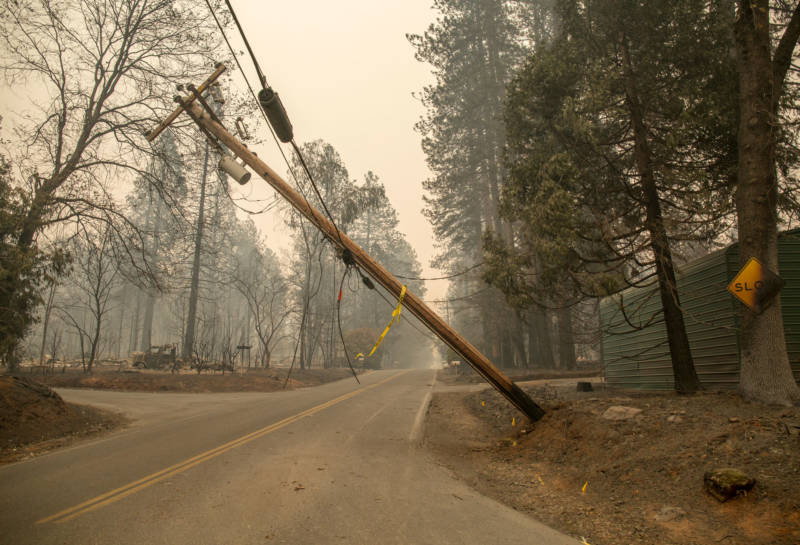The backlash to PG&E’s potential liability for the Dixie Fire prompted the company’s recently hired CEO, Patricia “Patti” Poppe, to unveil the plan for underground lines several months earlier than she said she planned.
Previous PG&E regimes have resisted plans to bury long stretches of power lines because of the massive expense involved, which the company has estimated at $3 million per mile. The company says it has about 25,000 miles of distribution lines that run through areas designated by state agencies as high fire-threat districts.
Poppe told reporters on Wednesday that she quickly realized after she joined PG&E in January that moving lines underground is the best way to protect both the utility and the 16 million people who rely on it for power.
“It’s too expensive not to do it. Lives are on the line,” Poppe told reporters.
Getting the job done within the next decade will require a quantum leap in how fast overhead lines can be buried.
The current undergrounding process is slow, as illustrated by a project in Paradise. After the Camp Fire, the company committed to bury 207 miles of lines. To date, it has completed just 70 miles of work there. The company said Wednesday the most line it has buried in a single day is 1,250 feet.
But PG&E expects to eventually be able to bury more than 1,000 miles of power lines annually, said its chief operating officer, Adam Wright. While Wright likened the project to the Marshall Plan that helped rebuild Europe after World War II, Poppe invoked President John F. Kennedy’s 1962 pledge for the U.S. to land on the moon.
PG&E’s path to this point has been strewn with death and destruction.
After previous leaders allowed its equipment to fall into disrepair in an apparent attempt to boost profits and management bonuses, the utility’s grid was blamed for igniting a series of devastating wildfires in 2017 and 2018 that prompted the company to file for bankruptcy in 2019.
Since getting out of bankruptcy, PG&E also has been rebuked by California power regulators and a federal judge overseeing its criminal probation for breaking promises to reduce the dangers posed by trees near its power lines. The utility has also been charged with another round of fire-related crimes that it denies committing.
Poppe insisted things are getting better this year under a plan that calls for PG&E to spend $1.4 billion removing more than 300,000 trees and trimming another 1.1 million. But she conceded the utility is “not making enough progress” since it’s only a fraction of the 8 million trees within striking distance of its power lines.
